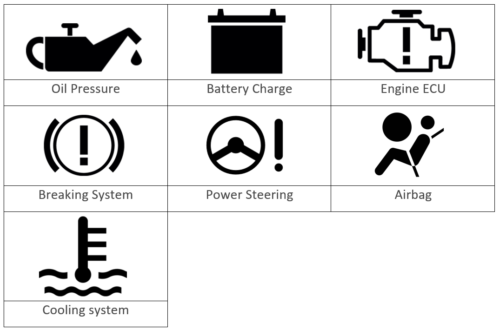

At what cost do you get from A to B, besides the cost of your fuel?
When avoiding future maintenance costs, surprise MOT bills and general unsafe driving scenarios, we can all make changes to the way we drive.
To minimise wear and tear to your vehicle, we have identified six swift ways to break bad driving habits and avoid big bills further down the road!
1. Avoiding pot holes

During the last 3 months of 2017, there was an 11% increase* in breakdowns due to potholes – not to mention the long-lasting damage to roads as a results of 2018’s Storm Emma and The Beast from the East, leaving behind a steady rise in pothole problems in the UK.
Their impact can cause suspension problems, buckled wheels, tyre bulges and cracked alloys, as well as damage to the tracking and wheel balance.
If you can't avoid a pot hole, always slow down before you make contact, but don't brake directly over a pothole, as this can actually cause more damage. Plus, when driving over the pothole, firmly hold the steering to avoid losing control.
Potholes are a regular headache for motorists and although it is up to national highways authorities and local councils to fix them, we can all help to report them. Contact Highways England to report a pothole on your road. You may also be able to claim for damage to your vehicle
2. Make your clutch last longer!
Holding your foot on the clutch unnecessarily is a common habit, even amongst experienced drivers, especially in congested areas with slow moving traffic.
But suspending your clutch when driving will result in premature brake wear and tear and ‘clutch slipping’ when the clutch gets worn. Always release the clutch fully once you have changed gear and do not rest your foot on the clutch when driving!
Drivers often ride the clutch to its bite point when performing hill-starts, for fear of rolling back. However, by not applying the brakes, and instead using your clutch in this way, will quickly burn it out. Instead, leave the car in neutral with the handbrake on until you’re ready to move and use your accelerator to get going.
3. Ditch dragging those brakes!

This is caused when drivers travel down a steep road while holding the brakes ever so lightly for long periods, causing a lot of heat and excessive wear on your brake discs.
Instead, slow the vehicle right down and apply the brakes intermittently, fully releasing the pedal to allow the brake pads to cool down periodically, repeating the process until you have reached the foot of the hill safely.
4. Flooring the accelerator – it’s not just the fuel bill!
Consistent and severe rapid acceleration can fast-track your engine wear and if harsh enough, will shorten the life of the engine.
Accelerating at a low rev count, or being in too high a gear, makes the engine work even harder, placing unnecessary strain on the engine. It’s better to change down to a lower gear and allow the revs to rise before changing back to a higher gear.
Most modern cars have a handy gear change indicator on the dashboard, advising you when to change up or down a gear – this is particularly important when carrying heavy loads or when climbing hills, to judge how hard your engine is working.
On cold winter mornings it’s also advisable to allow your engine to warm up first, before revving the engine, so that the oil has chance to travel around the engine and do its job effectively.
5. STOP before changing to reverse
You’ll be wishing you’d applied the brakes instead…
Jumping the gun and changing gear to reverse before fulling coming to a stop will cause wear and tear on the car’s transmission band.
You might be tempted to crunch those gears and switch prematurely, but the effects are pricey! Any work required on the automatic transmission will be labour-intensive, and therefore costly when it comes round to servicing your car.
6. Know your warning lights

Hands up who understands all of your dashboard display lights? Have you ever studied your owner’s manual for some insight? If you answered no, we recommend you dig it out and get familiar.
Some flashing lights may not appear to be of any urgency, such as replacing your washer fluid – but miss a vital warning light, or fail to understand its significance, and there may be greater consequences.
Many warning lights indicate that a fault has occurred inside the vehicle’s system. In a nutshell, red warning lights will need your immediate attention. While others allow you to continue to your local garage for assistance.
Spot the following lights on your dashboard lighting up and you’re advised to stop your vehicle and seek help from a local garage or emergency breakdown service immediately.
For a full list of your dashboard warning lights, please refer to your owner’s manual.
What future costs will you be avoiding?
There are obvious perks to rectifying bad driving habits, and you’ll now be aware of several ways you could be burning through your bank account when driving your car.
However, it is important to remember that no matter the cause of damage to your car, you should always fix the problem promptly to avoid progressive damage or at worse, an accident.
Get involved!
If you have more tried and tested tips to save on those car bills, please do share with us over on Facebook or Twitter!
Related posts
Our recent Driving Genius quiz revealed many drivers are a bit rusty when it comes to the rules of the road. Why not take the quiz yourself and see what score you get?!



